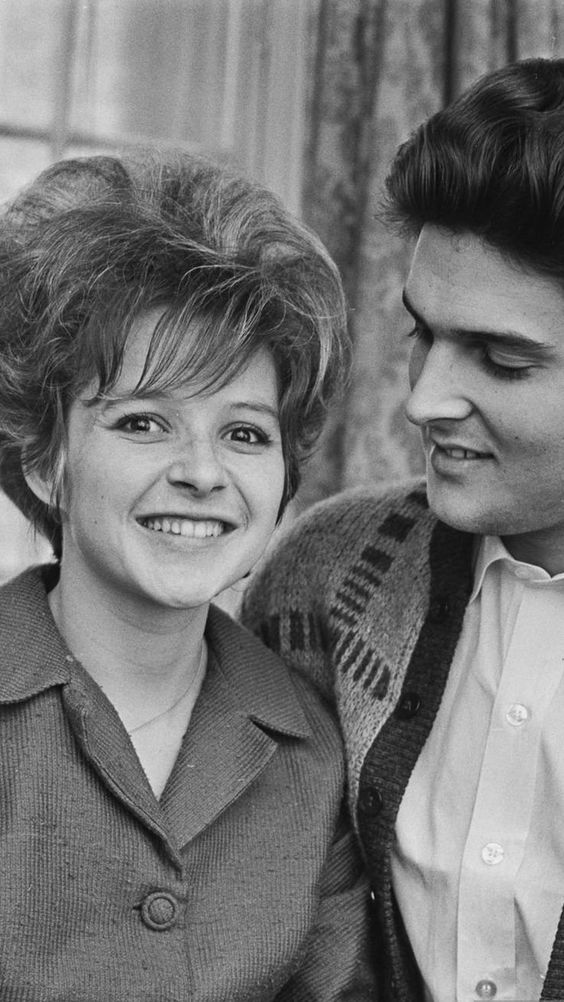Brenda Lee’s “All Alone Am I” stands as one of the most poignant and emotionally charged ballads of its era, a piece of music that continues to resonate deeply with listeners even decades after its initial release. This haunting track serves as a hallmark of Lee’s discography, offering a moving exploration of loneliness and heartache that perfectly embodies her unique ability to emotionally connect through song. Released in 1962, “All Alone Am I” quickly became a centerpiece of Lee’s illustrious career, showcasing not only her powerful vocal talent but also the sophisticated arrangements that defined the music of that time.
The song is featured on the album All Alone Am I, released during the peak of Brenda Lee’s career, a time when she was known as “Little Miss Dynamite” for her commanding voice and dynamic stage presence. Already an international star, Lee blended elements of country, pop, and rockabilly. Yet, this album reveals a more tender and introspective side, deeply influenced by classical and torch song traditions.
The All Alone Am I album represents a fascinating crossroads in Lee’s discography. By the early 1960s, she had cemented her reputation as one of the most versatile performers of her generation, capable of belting rock hits like “Sweet Nothin’s” while also delivering tender ballads such as “I’m Sorry.” This album leans deeply into the latter, presenting a collection of lushly arranged songs exploring heartbreak, solitude, and yearning.
The production showcases the influence of Nashville soundscapes merged with classical music sensibilities, reflecting the genius of producer Owen Bradley, who sought to craft albums appealing to both pop and country music fans. The result is a masterclass in subtlety: orchestral arrangements, understated yet poignant lyrics, and Brenda Lee’s emotive vocal delivery create a cohesive and immersive experience. The title track, “All Alone Am I,” is the album’s crowning jewel, its intricate instrumentation and somber tone perfectly capturing the record’s overarching themes.
One of the song’s most striking features is its layered instrumentation. Opening with a haunting string melody, the use of violins evokes a melancholic and cinematic mood. The delicate interplay between piano and guitar adds warmth and depth, with the piano’s soft chords enhancing the wistful tone, and the restrained guitar providing subtle rhythm without overpowering the orchestral elements. Background vocals are used sparingly to create an ethereal ambiance, like echoes of the narrator’s inner thoughts — all contributing to the song’s emotional power.
The story behind “All Alone Am I” is equally compelling. It is an English adaptation of a Greek melody composed by the renowned Manos Hadjidakis, who melded traditional Greek music with Western styles. English lyrics by Arthur Altman transformed this composition into a universal anthem of heartbreak, capturing emotional loss with lines like “All alone am I / Ever since your goodbye.”
Brenda Lee’s performance radiates vulnerability and sincerity, qualities that underscore her timeless artistry. Her ability to convey deep emotion without melodrama ensures this ballad remains relatable across generations.
The song’s enduring popularity rests on three pillars: Lee’s mature and expressive voice that defied her 17 years at recording, the impeccable production melding orchestration with subtle acoustic elements, and lyrics that touch on the universal experience of loneliness — a theme that transcends both time and culture.
For those moved by “All Alone Am I,” several songs in a similar vein offer a chance to continue the journey through heartache and longing: Brenda Lee’s “I’m Sorry,” Linda Ronstadt’s “Blue Bayou,” Patsy Cline’s “Crazy,” The Righteous Brothers’ “Unchained Melody,” and Elvis Presley’s “Can’t Help Falling in Love.” Each bears the same lush arrangements and heartfelt emotion that define the ballad genre’s finest moments.
“All Alone Am I” is far more than a song; it is a testament to the power of emotion in art. From its Greek origins to its transformation by Brenda Lee and Owen Bradley, it stands as a masterpiece for the ages. This track remains a timeless treasure for anyone who appreciates the fusion of country, pop, and classical sophistication — a song that leaves a powerful and lasting impression with its heartbreaking beauty.
